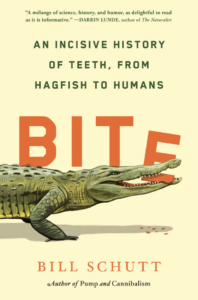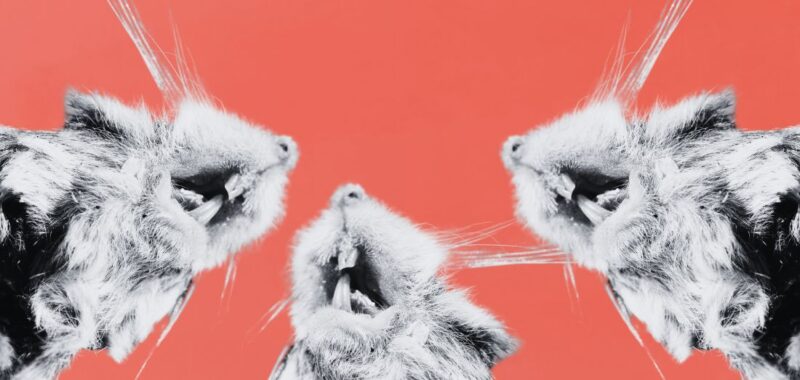“They don’t leave much, do they?”
–Thorne Sherman in The Killer Shrews
*Article continues after advertisement
When I was a graduate student in zoology researching bats, it was no surprise that Mammalogy became my favorite required course. Taught by Deedra McClearn, the wildly entertaining and equally brilliant functional ecologist, she was assisted by a pair of superb teaching assistants: Karen Reiss, well on her way to becoming an expert on toothless mammals, and Greg Graffin, an evolutionary biologist who studied fossil fish. Greg also happened to be the founder, songwriter, and lead vocalist of the internationally known punk band Bad Religion.
But beyond the eclectic faculty and staff, a key reason I found the course to be so engaging was the fact that we made frequent visits to the Arnot Teaching and Research Forest, located some fifteen miles south of Ithaca, in Central New York. The forest consists of more than four thousand mostly hilly acres of mixed hardwoods, over which are scattered ten ponds and a creek. During each visit, we students would break up into small teams, laying out dozens of live traps, located within one or more of the thirty-seven predetermined grids that divided the forest into “lots.”
During my first visit, I was admittedly dismayed to learn that after painstakingly setting out our traps, we would have to check them again four hours later. If we didn’t check them, McClearn explained, the species we would be capturing most frequently would starve to death. That species was Blarina brevicauda, otherwise known as the northern shorttailed shrew.
Resembling a stout field mouse, B. brevicauda is a tiny burrowing mammal with inconspicuous ears and minuscule eyes well hidden behind a long narrow snout. Though rodent-like in appearance, shrews had been long classified as insectivores—a grouping that now reflects dietary preference but not evolutionary relatedness or ancestry. As a so-called nontaxonomic group, the order formerly known as Insectivora (which contained shrews, moles, and hedgehogs) has been largely abandoned by modern taxonomists.*
Weighing in at a little over an ounce, and with a body length of three to four inches, B. brevicauda is one of the largest of the roughly four hundred species of shrews in the family Soricidae. The Etruscan shrew (Suncus etruscus), which weighs around 0.063 ounces, is not only the smallest terrestrial mammal but also holds the record for highest heart rate, at approximately fifteen hundred beats per minute (or twenty-five beats per second!). Of course, shrews bite, but three species of North American natives (genus Blarina) and two species of Old World water shrews (genus Neomys) share a characteristic that makes them nearly unique among mammals: their bites are venomous.
Before we get to shrew venom, though, some shrews, like those in the genus Blarina, have another cool tooth-related adaptation. They have iron in their enamel—iron hydroxide, to be specific. This can be best observed on the upper and lower occlusal surfaces of their teeth. Like an old iron fence, the crushing and grinding surfaces appear rusty red in the presence of oxygen. And, yes, this is also the reason that the iron-containing pigment hemoglobin makes our blood look red as it transports oxygen. In shrew teeth, the presence of iron is thought to make their enamel more wear-resistant, which is especially important given their nonstop eating habits.
The victims, which range from earthworms to small mammals like mice, are immobilized by frequent toxic bites for up to several weeks, during which time they are gradually eaten alive.
According to Lázaro Guevara, a research associate at Instituto de Biología de la Universidad Nacional Autónoma de México, “Shrews do not inject the venom, as we commonly see in snakes.” Instead, he told me, the shrew employs a pair of long, forward-facing lower incisors. At least two venomous chemicals are produced by a shrew’s submaxillary and sublingual salivary glands. As venom-containing saliva travels from the glands through ducts that release it into the shrew’s mouth, the saliva flows into grooves on the lip side of its bladelike lower incisors. Coupled with the action of its curved, hook-shaped upper incisors, this permits the saliva to reach the prey at the exact moment of the bite.
As in other venomous species, shrew venom is a chemical cocktail that contains several different toxins. In B. brevicauda, one such substance is the peptide soricidin (so named for the family Soricidae). Notably, soricidin has the ability to block muscle contraction, and B. brevicauda uses its venomous bite to paralyze prey but not kill it. What follows is known as live hoarding, which begins as the paralyzed prey are dragged off to be stored in a special hoarding chamber. The victims, which range from earthworms to small mammals like mice, are immobilized by frequent toxic bites for up to several weeks, during which time they are gradually eaten alive.
This sort of behavior relates back to the shrew’s extremely high metabolic rate, which requires that the tiny mammals feed almost continuously. Only by doing so can they obtain enough nutrients and energy to fuel their hyperactive lifestyle. Live hoarding provides a hedge against conditions when prey aren’t available. It also explains why we students were instructed to check our Arnot Forest live traps so frequently.
Biologist Keith Carson has speculated as to why venomous shrews aren’t affected by their own venom (which had become a pet question of mine): The relatively large molecules are unable to pass through the tissue lining the shrew’s mouth and into the circulatory system. Subsequently, once the venom is ingested, the shrew’s digestive enzymes and stomach acid breaks down the venom into inactive forms. Seems reasonable to me.
Given my love for zoology, horror, and Hollywood, I can’t end a discussion on shrews without putting in a serious plug for my all-time-favorite cheesy horror film, The Killer Shrews (sorry, Plan 9 from Outer Space fans). Dropping off supplies at a remote island, our hero Captain Sherman (actor James Best) discovers a mad scientist experimenting on a serum to shrink humans—this in a perfectly reasonable attempt to decrease demands on the world’s food supply. As these things go, he has instead produced a pack of ravenously hungry, hound-sized shrews. This size comparison is easily confirmed by the filmmaker’s clever use of real hounds covered in what look to be sections of carpet and fitted with three-inch extensions on their canine teeth.
The Killer Shrews was shown as a double bill in 1959 with The Giant Gila Monster, an exciting pairing, given that both of the featured creatures share a predilection for venomous bites. Shy inhabitants of the American Southwest, Gila monsters (Heloderma suspectum) envenomate their prey—and sometimes humans who annoy them—during a powerful and lengthy bite, literally chewing their venomous saliva into the wound. The venom itself is a cocktail of enzymes and other compounds produced in modified salivary glands. It is not normally fatal to humans—with no reported fatalities since 1930—but that said, their bites (which are uncommon) can produce excruciating pain and a laundry list of potentially serious problems if not treated.
In real life, non-mad-scientist types examined Heloderma toxin for its potential medical benefits, identifying a hormone thought to enable Gila monsters to go for months without eating. They named the hormone exendin-4 (I’m thinking the name extendin-4 was already taken). The synthetic version of exendin-4 is now used to treat type 2 diabetes by increasing the production of insulin by the pancreas. Since the life-saving properties of Gila monster venom weren’t known in 1959, the movie poster production team tasked with a Killer Shrews/Giant Gila Monster double feature opted instead for the slightly-less-than-scientifically-accurate “Super-Sonic Hell Creatures No Weapons Can Destroy!
* This is reminiscent of the now-defunct order Reptilia, which formerly contained the snakes, lizards, crocodiles, turtles, and dinosaurs. To the dismay of nonscientist types, reptiles and even dinosaurs are no longer considered valid groupings by modern taxonomists.
___________________________________________________

From Bite: An Incisive History of Teeth, from Hagfish to Humans by Bill Schutt. Used with permission of the publisher, Algonquin Books. Copyright © 2024 by Bill Schutt.

